ILTS Infectious Diseases SIG Statement: COVID-19 Vaccination
The recommendation by the international authorities and professional societies has been to vaccinate patients and healthcare workers. The ILTS Infectious Disease SIG concurs with this endorsement, even though many issues for transplant recipients remain unknown.
January 2021
ILTS Disclaimer
The protracted nature of the COVID-19 pandemic has taken its toll on our professional and personal lives. The recent availability of vaccines has raised the hope that the pandemic will end. The recommendation by the international authorities and professional societies has been to vaccinate patients and healthcare workers. The ILTS Infectious Disease SIG concurs with this endorsement, even though many issues for transplant recipients remain unknown.
Early information about vaccine’s prevention of Covid-19 is promising. However, there is a paucity of transplant and immunosuppressed population-specific information. The liver community should be aware that multiple vaccine types are becoming available and will likely differ in efficacy and duration of immune response. Of those, the live attenuated vaccines may not be appropriate for the transplant population. Additionally, today’s SARS-CoV-2 virus may not be tomorrow’s. The recent variants from South Africa and Britain have multiple mutations, with many in the spike protein, which is currently the neutralizing target of most vaccines. The vaccine antibody response is thought to be effective to neutralize the mutant viruses, but it is of course possible that the further mutations will modify vaccine efficacy.
Messenger RNA (mRNA) vaccines: Two vaccines (approved by US FDA and EU EMA) are available through emergency use authorization (EUA) and are being distributed by manufacturers, Moderna and Pfizer BioNtech. These two vaccines appear to be similar in method to elicit a viral-specific immune response.
These two mRNA vaccines use synthetic mRNA that enters host cells and utilizes host protein transcription pathways to produce viral proteins, which subsequently stimulate a viral spike protein-specific immune response. Both vaccines produce an antibody and T cell response. The vaccines require two parenteral injections over a four-week interval. There are storage and durability differences that affect distribution strategies. The most common side effects include arm pain, fever, and chills; although, rare serious reactions have been reported such as anaphylaxis.
Neither of these vaccines has been tested in transplant candidates or recipients. There is proprietorial information about the vaccine production; the mRNA is lipid encapsulated but the mechanism of cell entry is undisclosed. Non-specific fusion with cell membranes and endocytosis of the mRNA is possible, but if specific receptor-ligand interaction is operative, signaling pathways may cause cell stimulation. Further studies are necessary to determine the degree of protective immunity that mRNA vaccines provide to the transplant candidates and recipients. It is necessary to be mindful that the effect of the mRNA vaccines may alter other immune responses, with the potential to heighten the alloimmune response. It is unknown if the recently transplanted individual can mount an immune response, thus the vaccine administration may not provide satisfactory protection for some time after the induction immunosuppression. Additionally, while the antibody response appears to be durable in the non-transplant population, the duration of SARS-CoV-2 antibodies in immunosuppressed patients is unknown. Although these two mRNA vaccines present the safest alternatives for the transplant population at this time, there remains limited data. The immune responsiveness and the duration of antibodies following vaccination will need to be studied in liver transplant candidates and recipients, especially those that have received lymphodepleting therapies.
Viral vector vaccines: Two other vaccines by AstraZeneca and Johnson & Johnson are preparing to file for EUA. They use live adenovirus as vectors to introduce the coronavirus genetic material into the cell. The AstraZeneca vaccine is based on a chimpanzee virus. Its trial was paused and restarted due to suspected transverse myelitis in three participants. Of these, two had received the vaccine, one of whom was later judged to have multiple sclerosis. The remaining participant developed signs of transverse myelitis 14 days after a booster dose and is reported to be recovering. The vaccine was recently approved by the British Medicines and Healthcare Products Regulatory Agency, followed by emergency authorization in India. Similar to mRNA vaccines, it requires two shots but can be stored at -4 oC, making it more practical for storage and distribution. The Johnson & Johnson vaccine trial, previously paused, is the only single-dose vaccine and is stored at -4 oC as well. These vaccines have similar side effect profiles. Historically we recommended against using the live viral vector vaccines in transplant patients on immunosuppression. There are also concerns regarding the safety of the live viral vector vaccines in the severely ill waitlist populations that could have difficulty clearing the viral vector. The Russian Federation released the first registered vaccine, Sputnik V, which is based on the adenoviral vector technology and has been distributed worldwide. The vaccine requires two administration doses with storage temperatures between +2 to +8 oC.
Viral protein vaccines: CoronaVac by the Chinese company Sinovac has little information, but uses inactivated Coronavirus as the immunostimulant. The Sanofi/GSK vaccine utilizing recombinant spike protein has been delayed and will not be available during the foreseeable future.
The published transplant experience over the past year has shown that COVID-19 has known morbidity and mortality for pre- and post-transplant populations. Although further research is desperately needed and there are a plethora of unknowns in the equation, it is recommended that all waitlist patients and transplant recipients be vaccinated when it is thought they can mount an immune response. Live virus vector vaccines should be avoided, if feasible.
As the immunological response to newly developed SARS-CoV-2 vaccines and their length are not known in liver transplant candidates and recipients, it is of paramount importance to continue observing social distancing, masking, and disinfection precautions.
Consideration should also be given to vaccination strategies of live donors prior to donation as well as the caretakers of transplant patients. There is evidence to suggest that major hepatectomy contributes to the immune dysfunction in the early postoperative period, which could potentially exacerbate the donor risks during the COVID-19 pandemic. With respect to caretakers, the household transmission rates near 75% within 5 days of index patient’s diagnosis. Therefore, the vaccination of caretakers is strongly encouraged. We acknowledge that vaccine distribution across the world varies and although universal vaccination is the ultimate goal, the transplant professionals will have to provide the care within the established guidelines of the country they are in.
Worldwide, vaccine national registries and medical societies are actively gathering the information to address unknowns about COVID vaccination in pre- and post-liver transplant recipients. Until more information is available and given the baseline neutropenia and immunosuppressed status of our population, we recommend monitoring the presence of antibodies every 3-6 months in our liver transplant recipients and candidates. We also suggest closely monitoring liver enzymes in liver transplant recipients following vaccination to ensure the lack of immune-mediated graft reactions.
Timothy Pruett & Varvara Kirchner (Topic Coordinators)
Infectious Diseases and Liver Transplantation SIG Steering Committee
- CDC COVID-19 Vaccination, https://www.cdc.gov/vaccines/covid-19/index.html
- Knoll M.D, Wonodi C. Oxford-AstraZeneca COVID-19 Vaccine Efficacy. Lancet. 2021 Jan; 397(10269): 72-74.
- Logunov D.Y, et al. Safety and immunogenicity of an rAd26 and rAd5 vector-based heterologous prime-boost COVID-19 vaccine in two formulations: two open, non-randomised phase 1/2 studies from Russia. Lancet. 2020 Sept: 396(10255): 887-897.
- Dong Y, et al. A Systematic Review of SARS-CoV-2 Vaccine Candidates. Nature. 2020 Oct: 5:237. https://doi.org/10.1038/s41392-020-00352-y
- Efron P.A, et al. Major Hepatectomy Induces Phenotypic Changes in Circulating Dendritic Cells and Monocytes. J Clin Immunol. 2009 Sep; 29(5): 568-581.
- Grijalva C.G, et al. Transmission of SARS-CoV-2 Infections in Households — Tennessee and Wisconsin, April–September 2020. MMWR. 2020 Nov: 69(44): 1631-1634. https://www.cdc.gov/mmwr/volumes/69/wr/mm6944e1.htm





